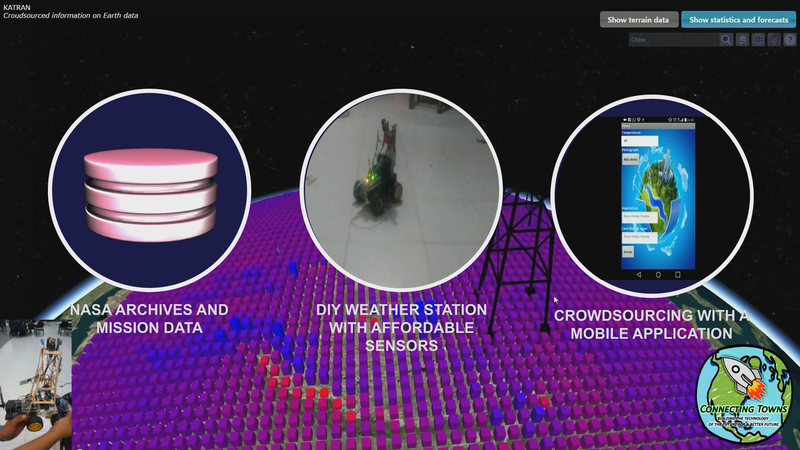Connecting Towns | Live Smart
Awards & Nominations
Connecting Towns has received the following awards and nominations. Way to go!
The Challenge | Live Smart
Katran
An application that uses machine learning and statistical methods to predict the availability of resources needed to sustain cities

One of the greatest concerns of society nowadays is the sustainability of the human populations throughout the world. The feasibility of further expansion of the urban areas must be evaluated from different perspectives, including but not limited to the availability of the resources, the environmental conditions, the economical aspects and the weather.
Planning for the cities of tomorrow is an endeavour that requires a lot of information that usually comes in different forms, from different sources, and that sometimes is incomplete. In this regard, extracting the most important features out of a universe of information is one of the major challenges facing long term planning for future cities and human population.
Given these conditions, we have created KATRAN, an application that aims to collect data about environmental conditions from different sources including mission files provided by NASA and available to the public, DIY sensors for temperature, humidity, and smoke. In addition, as part of our prototype, we propose the creation of a mobile device to crowdsource environmental information from the public. Our initial prototype is capable of making basic predictions about availiability of water by using datasets provided by NASA (GESDISC GLDAS NOAH). The application uses the Cesium framework for rendering which allows users to visualise data on a browser window without needing any particular plugins or special software.
In addition, we have built a prototype for a portable weather station leveraging affordable sensors that can be integrated with an Arduino board in order to elicit information about the environmental conditions in an area of interest. This prototype is able to respond to commands given by a supervisor in order to move forward, as well as turn left and right to gather data.
As part of our future work, we plan to implement Monte Carlo simulations and more advanced algorithms as well as computer vision to aid in the predictions. Considering the high computing requirements, a full-fledged server side implementation is proposed which will integrate with big data solutions, such as Hadoop and Mahout.
References:
- Global Land Data Assimilation System Version 2 (GLDAS-2) Products https://hydro1.gesdisc.eosdis.nasa.gov/data/GLDAS/...
- Groundwater and Soil Moisture Conditions from GRACEData Assimilation Product Version 1.0 https://hydro1.gesdisc.eosdis.nasa.gov/data/GRACED...
- Cities oftomorrowChallenges, visions, ways forward http://ec.europa.eu/regional_policy/sources/docgen...
- Principal Component Analysis http://setosa.io/ev/principal-component-analysis/
- CESIUM 3D Models https://cesiumjs.org/tutorials/3D-Models-Tutorial/
SpaceApps is a NASA incubator innovation program.